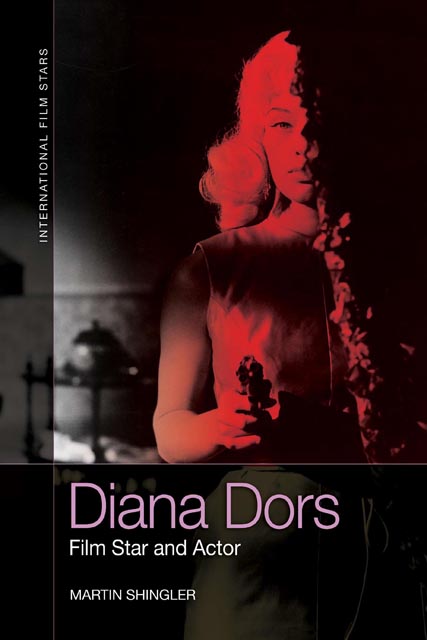Summary
Diana Dors appeared in an assortment of pictures during the late 1940s. Apart from one or two exceptions, the majority were pretty undistinguished and in most of them she was cast in small supporting roles with limited screen time and little scope for subtle or complex characterisation. She did, however, have the good fortune to work with some seasoned filmmakers such as George King, the director of her debut film The Shop at Sly Corner (1946), as well as rising new talents such as Ken Annakin, who directed her in Holiday Camp (1947) and Here Come the Huggetts (1948), among others. Nevertheless, her path to stardom was hampered by stiff competition from a multitude of talented, beautiful and revered actresses, who enjoyed great success in the post-war British film industry.
In his anthology British Stars and Stardom, editor Bruce Babington writes that the forties were ‘a great period for British female stars’, chief among them being Margaret Lockwood – the ‘British Queen of Hearts’ (2001: 95). Combining her ‘nice ordinary girl’ looks with a screen persona as a feisty and unconventional woman, Margaret Lockwood won the hearts of millions of British moviegoers, especially women, after her starring role in The Wicked Lady (Arliss 1945). If she occupied a place at the very pinnacle of British movie stardom at this time, Dors laboured away at the foothills. Having begun her film career at the age of fifteen in 1946, she became both an apprentice film actress at the Rank Organisation and a Charm School ‘scholar’ the following year.
When compared to Lockwood at this time, Dors’ film career in the forties may well be regarded as negligible. However, as discussed in this chapter, her regular appearances in British films from 1946 to 1949 enabled the young actress to evolve a distinctive screen persona, one that deserves to be recognised as a significant achievement for a teenager attempting to break into a highly competitive industry.
As explained in more detail below, older actresses such as Jean Kent and Greta Gynt were the acclaimed bad girls of British cinema during this period and they were invariably first in line for starring roles as dangerous, loose and wicked women after Margaret Lockwood. It was partly Dors’ youth that prevented a rapid elevation to stardom in the 1940s but her physical features also made her ascension to ‘starlet’ status something of a challenge.
- Type
- Chapter
- Information
- Diana DorsFilm Star and Actor, pp. 13 - 30Publisher: Edinburgh University PressPrint publication year: 2022



